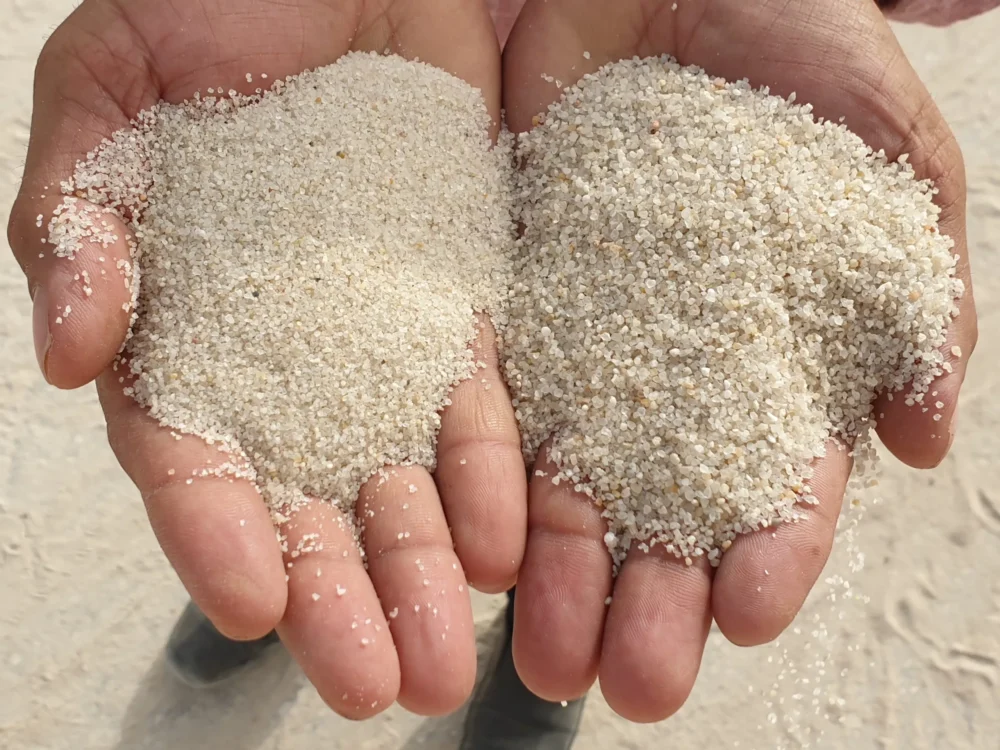Customer Support: 604793
Quartz
Quartz sand, also known as silica sand, is a type of sand that is mainly composed of silica (silicon dioxide). It is one of the most common and widely distributed minerals on Earth and can be found in various geological formations
Quartz sand, also known as silica sand, is a type of sand that is mainly composed of silica (silicon dioxide). It is one of the most common and widely distributed minerals on Earth and can be found in various geological formations
- Composition: Quartz sand is primarily composed of quartz crystals. Quartz is a hard, crystalline mineral that consists of silicon and oxygen atoms arranged in a continuous framework of SiO2 tetrahedra.
- Physical Properties: Quartz sand is often characterized by its high hardness (7 on the Mohs scale), resistance to chemical weathering, and high melting point. It is usually colorless or white but may also be found in various colors due to impurities.
- Abundance: Quartz is one of the most abundant minerals in the Earth’s crust. It is a major component of many types of rocks, including granite, sandstone, and quartzite.
- Formation: Quartz sand is often formed through the weathering and erosion of pre-existing rocks that contain quartz. Over time, the quartz grains are transported by wind, water, or ice and deposited as sand.
- Uses:
- Construction: Quartz sand is a key component in the production of concrete and mortar. It provides strength and durability to these building materials.
- Glass Manufacturing: Quartz sand is a crucial raw material in the production of glass. It is melted at high temperatures to produce glass products for various applications.
- Foundry Casting: In foundries, quartz sand is used as a molding material for metal casting.
- Industrial Applications: Quartz sand is utilized in various industrial processes, such as water filtration, abrasive blasting, and the manufacturing of silicon wafers for the electronics industry.
- High Purity Applications: High-purity quartz sand is sought after in industries such as electronics and solar panels, where impurities can affect the performance of the final product.
- Silica Sand Mining: Due to its widespread use, silica sand is often mined from deposits in open-pit mines or extracted through dredging.
- Environmental Concerns: Mining and processing of quartz sand can raise environmental concerns, particularly if not done sustainably. Issues may include habitat disruption, water usage, and the release of fine particles into the air.
Quartz sand’s versatile properties and widespread availability make it an important resource in various industries, contributing to the development of numerous everyday products and infrastructure.









